With little maintenance, you can grow an indoor herb garden that will keep your kitchen supplied with fresh ingredients year round. There are several varieties of herbs that thrive in an indoor setting such as a kitchen windowsill, or under a shelf grow light. Additionally, many can be started with a simple seed pack, or purchased as small plants from a local nursery.
Which herbs grow best?
If you are just starting out with an herb garden, I would suggest starting with Basil, Chives, Oregano, Rosemary, Thyme, and Parsley. Other favorites include Mint, Chrvil, and Bay Laurel.
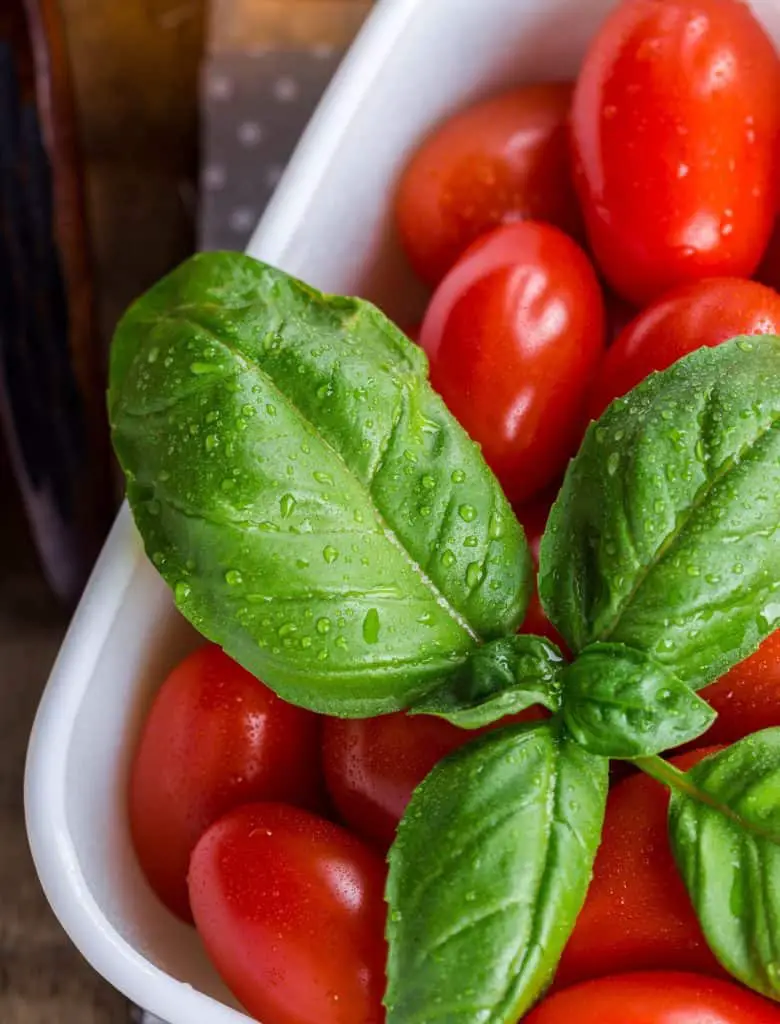
Basil: Basil typically requires six to eight hours of sunlight daily to reach maturity, and grows fantastically indoors. It can be started from seeds or transplants, but will need warm soil in order to grow. We typically plant our basil from seed, and start six weeks before the last predicted Spring frost. For transplanting, we wait until the temperature of the outside soil has warmed to at least 50ºF, or 60ºF for best growth.
- Basil seeds should be planted in moist warm soil about ¼ to 1 inch deep.
- A basil plant will grow to 24 inches at maturity. You will want to plant them 12-16 inches apart to allow for optimal growth. (or two plants per square foot).
- Allow for good drainage, as this poor drainage (too much water) is one of the greatest threats to basil.
- About six weeks after planting, you may want to pinch off the center shoot to prevent early flowering.
Chives: Chives are a cold tolerant perennial that belongs to the onion family. They require six to eight hours of sunlight daily for optimal growth. Like basil, they grow fantastically indoors, and a south facing windowsill will provide plenty of sunlight. Chives are best grown from seeds, in pr-moistened soil, broadcast generously and then covered with ¼ inch of moist soil.
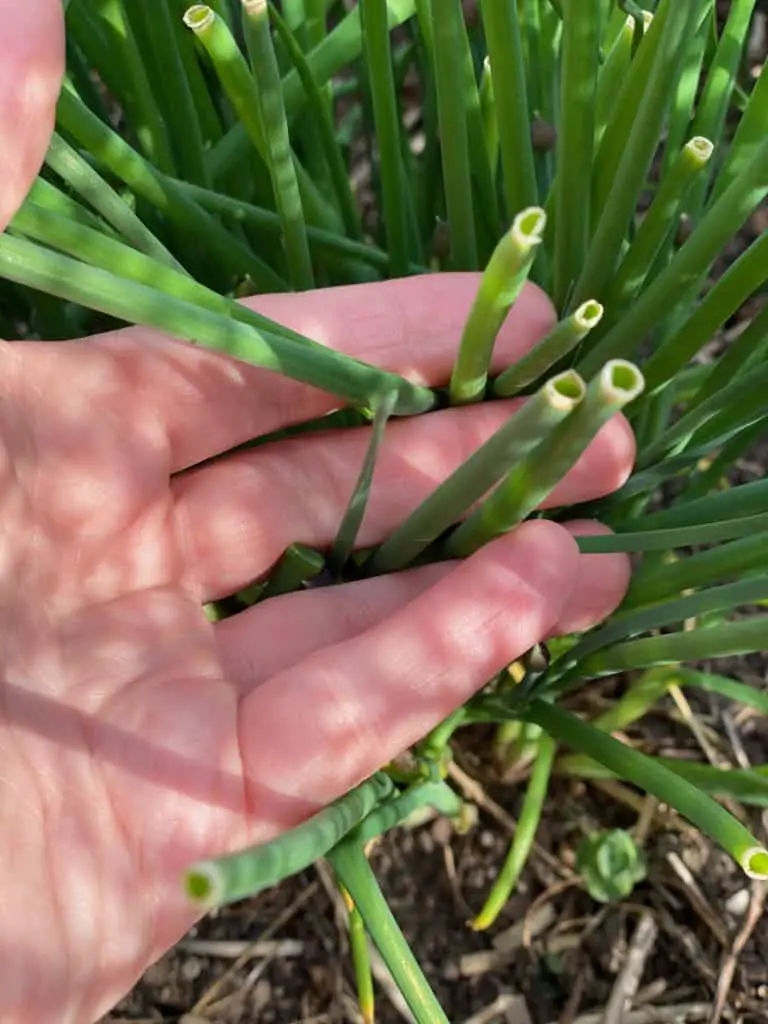
- Chives will germinate within two weeks
- For indoor planting, use at last six inches of sterile, moist soil. We use six inch clay pots, and keep one chive plant in our kitchen windowsill, and also have it growing annually in our raised garden on the back porch.
- Chives require good drainage, but you will not want the soil to be too wet.
- To harvest chives, use a sharp pair of shears and snip the leaves from the base of the plant to within one-2 inches of the soil.
- If you find that your windowsill chives are “leaning” towards the sun, be sure to rotate them.
- Plan on harvesting 3-4 times per year.
Oregano: Oregano is a perennial plant that requires plenty of warmth and sunlight to reach maturity. For indoor growth, oregano will need at a minimum, six to eight hours of full sunlight daily, or optimally, an indoor grow light. Oregano can be grown from either seeds or cuttings from an established plant. You will you want to plant the seeds or cutting in well drained.
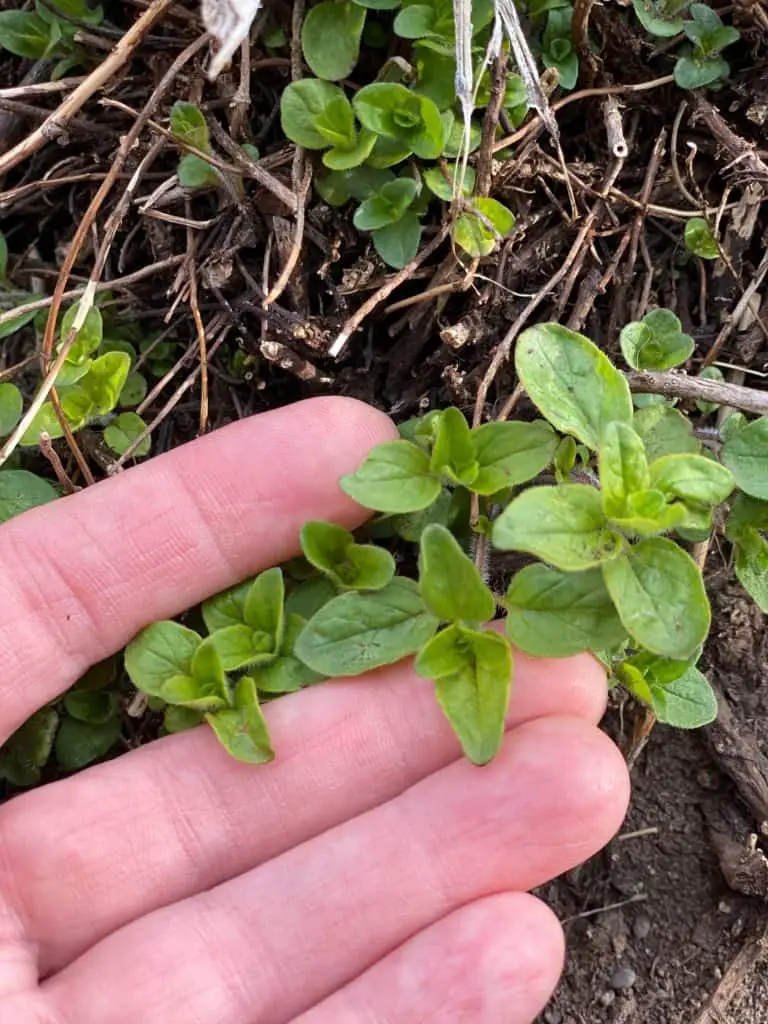
- Oregano plants can reach up to two feet at maturity, so give them 18 inches to grow between seedlings if possible.
- Regular trimming after about four inches of growth) will encourage your oregano plant to grow bushy and dense, and avoid legginess.
- Don’t over-water. Oregano requires good drainage, so only water the plants when the soil begins to feel dry to the touch. This will also help you avoid root and stem rot.
- Thin oregano plants every two to three years. They are self-seeding, so will easily grow back.
- Consider picking off any browning or spotted foliage to help protect from disease and prevent unwanted spread.
- Also consider trimming or cutting the stems just above the plants lowest set of leaves to encourage new growth for the next cutting.
Rosemary: Rosemary is a perennial evergreen shrub with aromatic and distinctive sprigs that add a resinous flavor to many poultry and meat dishes. Rosemary grows well in drier or rocky terrain, and can grow to up to four feet in height and width at full maturity. Rosemary will need well draining soil, and does not do well in humid, or consistently wet soil.
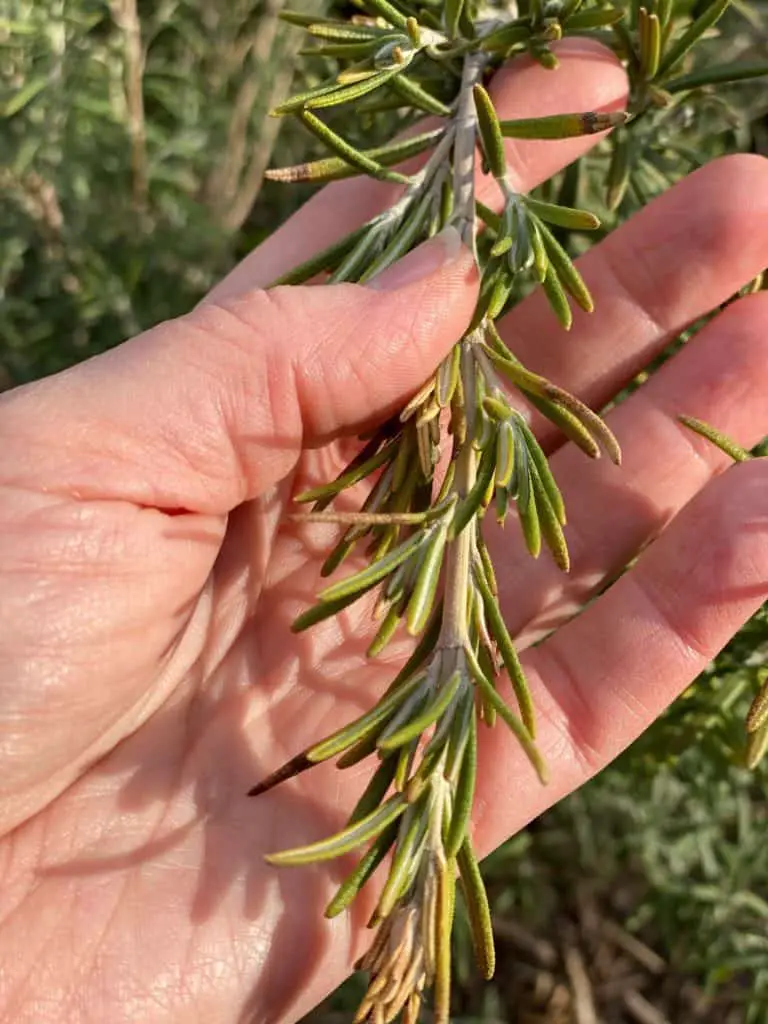
- Rosemary can be harvested at any time once the plant has been established. Just trim off springs as needed.
- Because it is perennial, rosemary will grow more vigorously after the initial growing season.
- Rosemary can be dried and stored if you have an excess harvest.
Thyme: Thyme is a low growing hearty perennial with fragrant leaves that add a gentle clover-like and woody flavor to dishes sch as pilafs, soups, or grilled meats. You may be surprised to know that there are over 50 varieties of thyme, each of which carries a differing flavor and fragrance. Thyme blossoms are also a fantastic attractant for bees and other pollinators. For this reason, we always have some growing in our outdoor herb garden. Often thyme is confused with rosemary, as their flavors both add a warmth and peppery undertone to dishes. Thyme is a Mediterranian plant that does well in more arid climates, and requires little maintenance.
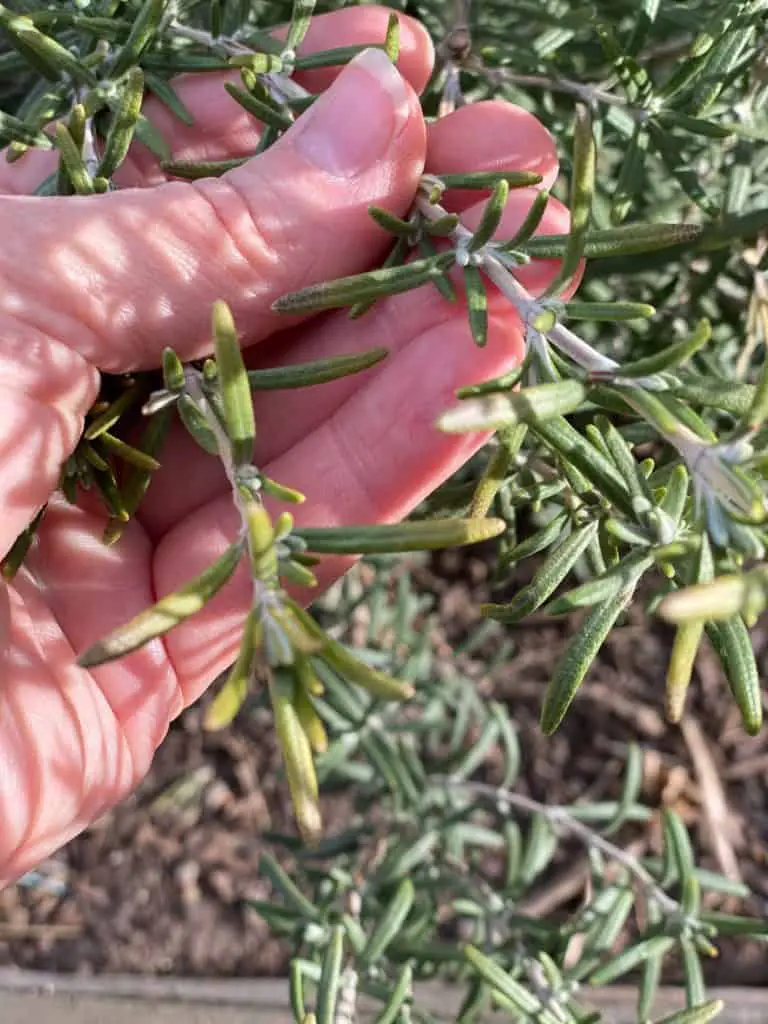
- Thyme thrives in full sunlight and warm temperatures, and grows fantastically under heat/grow lights.
- Thyme plants need good drainage, so roots will have a chance to dry. No “wet feet” or root rot. Then, only water when the soil feels completely dry again.
- It is best to start thyme from cuttings or as a small plant bought from a nursery because seeds have slow and uneven germination periods.
- Plant cuttings in six inches of moist warm soil (approximately 70ºF) and 12-42 inches apart.
- Thyme plants can grow to 12 inches in maturity.
- Cut thyme back by 1/3 of an inch in the spring as needed once the plant has started to produce new growth, and strip the leaves from the woody stem before using.
Parsley: Parsley is a thin biennial herb plant that grows easily indoors from seed. A member of the dill family, parsley is popular in sauces, soups, and salads because it brings a brightness to other flavors. It can have a mild bitterness depending on when picked, and its delicate leaves make a beautiful garnish. Parsley seeds should be started about ¼ of an inch into moist soil, and take 75 days to reach full maturity.
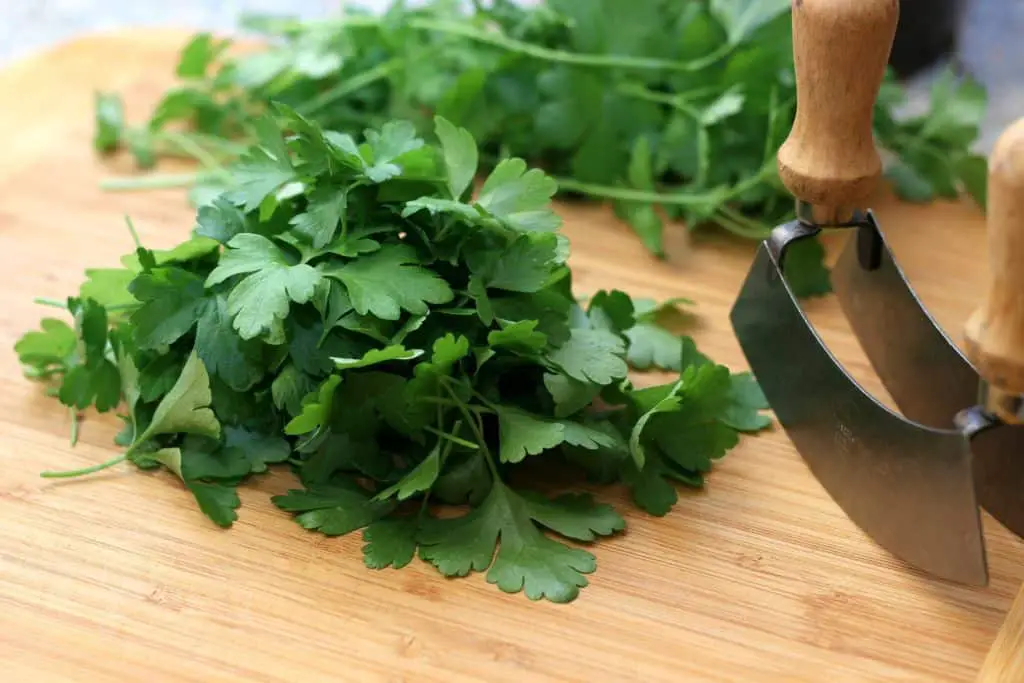
- Parsley seeds should be planted 6-8 inches apart from each other, and take 3-4 weeks to germinate. In colder temperatures, they can take up to 3 weeks to sprout.
- To harvest Parsley, consider cutting off the outer stalks closer to the ground, using scissors rather than plucking off upper leaves and leaving bare stalks.
- Parsley can be transplanted to an outdoor garden three to four weeks before the last expected frost.
Mint: Mint is a vigorous perennial plant with jagged toothed leaves, and a very fragrant, aromatic taste. There are numerous varieties of mint, and it is used not only has an herb for flavor, but also for ground cover, tabletop accent plants, and air fresheners just to name a few. Mint can be grown from seed, in moist warm soil, planted about ¼ inch down, or from cuttings. We have always used cuttings from fresh top growth put in a cup of water in our south facing windowsill until the stems take root. From there, we transplant the entire plant to a windowsill (or desktop) clay pot for growth.
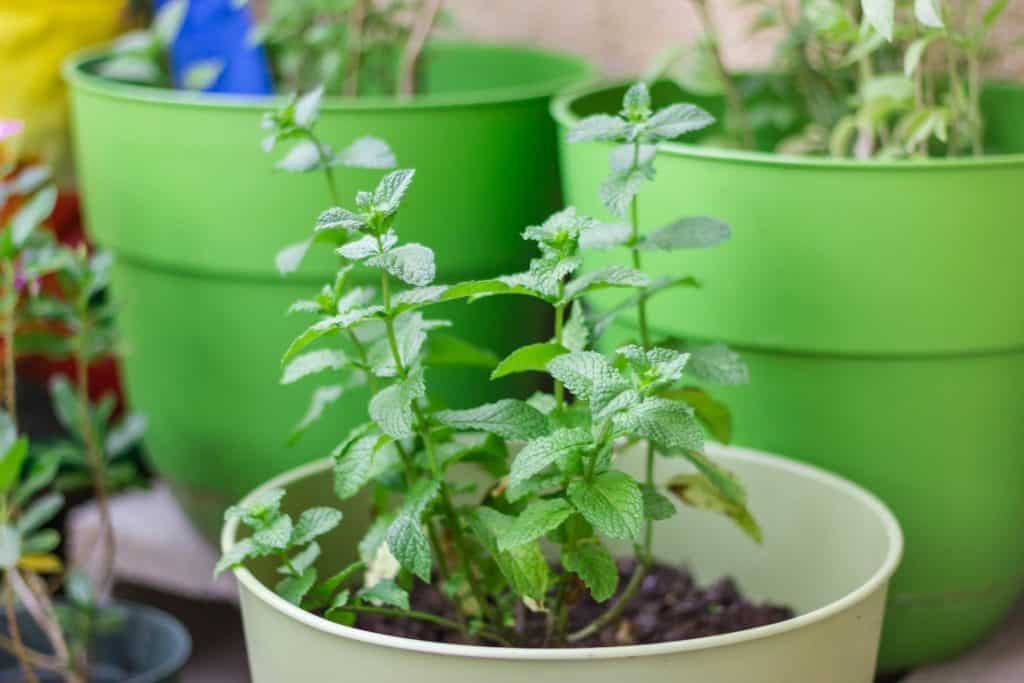
- Mint plants can also be planted from root cuttings
- Mint plants need good drainage, but will prefer a moist (but well-drained) container.
- Mint can grow to be 12-24 inches in height at maturity, and are best if planted in a separate pot, or 1-2 feet apart when outdoors.
- Mint plants require minimal care, so long as the soil is kept minimally moist.
- Beware, some mint plants have a mind of their own, and if left unattended, will take over a four to six foot garden area. Roots are shallow however, so the plants are typically easily to maintain.
Chervil: Chervil is a cool season annual plant that has an appearance similar to parsley. Its leaves have a mild aniseed taste and is used often in French cuisine, or in combination with other herbs to create “herbs de provence”. Chervil grows well indoors, and can be planted from seed, in containers, or large tubs. Seedlings are known to be quite fragile, so should not be transplanted. Instead, sow a cluster of chervil seeds a 1-2 inches inches below the ground in moist warm soil, with light, in order to germinate.
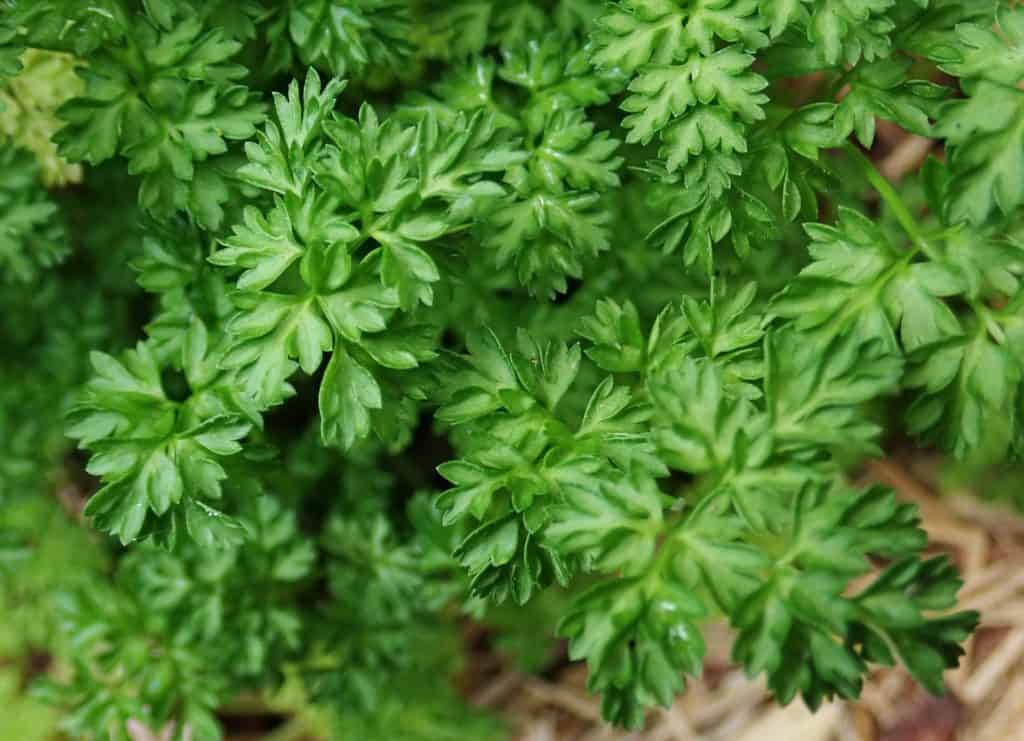
- Chervil can be harvested year round, and does well in full sunlight.
- It is best to harvest chervil before flowering for best flavor. Simply cut off chervil leaves whenever needed.
- It is recommended to snip the leaves at the base of the stem because this will allow new shoots to grow.
- Chervil can grow to a height of 1-2 feet at maturity.
Bay Laurel: Bay Laurel is an aromatic evergreen tree, or shrub that is native to the Mediterranean region. These plants can grow several feet high, so for indoor use, we recommend its own pot that will allow for optimal growth or eventual outdoor transplantation. When dried, Bay Laurel is most noticeable for its fragrance than taste, but will add a slight floral and herbal flavor similar to thyme. We use bay laurel very sparingly in soups or wet dishes to keep heavy flavors a bit lighter.
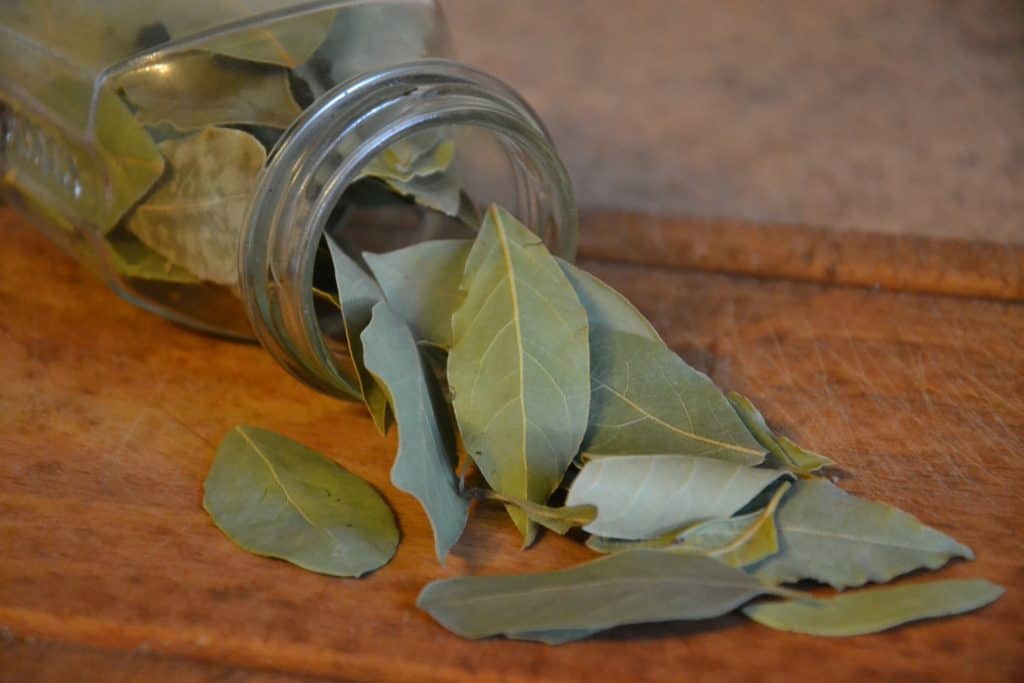
- Bay Laurel plants are more popular for being ornamental, and are easily shaped to fit any garden or room space. Its leaves are also popular additions to flower bouquets and seasonal wreaths.
- Bay Laurel plants do best in full sunlight, and good drainage. We also re-pot our every few years to add nutrient to the soil. We do this by adding several rocks to the bottom of the pot, covered with a good potting soil.
Though there are literally thousands of herbs and plants that can grow well in an indoor setting. This is the list that we find most helpful for last minute dishes, and adding freshness to our most common kitchen recipes, without requiring too much upkeep. We hope you enjoy growing your own indoor garden as much as our family has.

